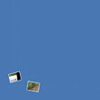 Performed, composed, and recorded over a period of 14 months, Crosshatches is a massive and exquisitely constructed 85 minute piece stretched across two compact discs. On it, Pisaro and Tsunoda sketch and blend non-musical sounds into musical ones, erasing the seemingly natural distinction between them as they go. The vehicle for that transformation is crosshatching, which the duo elegantly transforms into a musical mode.
Performed, composed, and recorded over a period of 14 months, Crosshatches is a massive and exquisitely constructed 85 minute piece stretched across two compact discs. On it, Pisaro and Tsunoda sketch and blend non-musical sounds into musical ones, erasing the seemingly natural distinction between them as they go. The vehicle for that transformation is crosshatching, which the duo elegantly transforms into a musical mode.
Hatching is a technique used in the visual arts that consists in placing roughly discrete parallel lines next to eachother at various distances. Cross-hatching is a similar technique. By varying the angle, closeness, thickness, and lengths of their lines, artists such as Albrecht Dürer used it to create the illusion of volume, texture, and contrast in his drawings, woodcuts, and engravings. I keep thinking about these qualities when listening to Michael Pisaro and Toshiya Tsunoda's Crosshatches on Erstwhile. Beside the pleasure of hearing the album, which is subtle, sometimes delicate, and quite beautiful, I've enjoyed thinking about the ways Pisaro and Tsunoda translate this visual technique into a musical one.
Crosshatches is made up primarily of sine tones and field recordings. The field recordings come both raw and in a manipulated state, whether they're chopped, looped, distorted, or otherwise. Guitars are used briefly in a few passages on the first disc, and a piano shows up near the end of the second. I assume that Michael plays both and that Toshiya provides the field recordings, but there are no credits to confirm that suspicion and no other information online. Static, interference, and possibly other sources are also used.
Initially, the music sounds one-dimensional. Michael and Toshiya's contributions bleed into one another, forming a hard, smooth surface. It's the musical equivalent of seeing a polished marble block or rolling a glass bead around in your hand. With time, variations and contrasts emerge. Instruments rise above the surface and draw shapes in the air, and tiny imperfections, little details previously unnoticed, come into focus. I hear people laughing in the distance, insects, and maybe the shuffling of equipment in a studio. The music branches out, diversifies, and confuses simultaneously. There's a beautiful crescendo on the first track of the first disc that culminates in little bursts of guitar and a heavily plucked bass. Buzzing tones continue underneath, but I can no longer distinguish which of them are recorded and which are performed, and I can't even be sure that the guitars themselves aren't a kind of modified field recording—maybe just the sound of someone warming up.
One of my favorite sections is on the second track of the second disc. It is, as far as I can tell, a mostly untouched recording of a storm. The recording captures the sound of rain, wind, and the whipping of tree limbs; I can close my eyes and half imagine the bushes outside my window bending and dancing in the downpour. Only after listening to the album a couple of times did I notice the sine waves shimmering at the edges of the storm. They were there when the recording started, but I thought they had disappeared. Were they invisibly present the whole time? Or deftly re-inserted into the mix? It isn't easy to tell and since the wind and waves pair so well I can't be sure what would happen if any of the elements of the recording were taken away. I also can't be sure there aren't more invisible elements swimming quietly in the background.
There's a corresponding section in "1.1" where Toshiya and Pisaro combine apparently random static with more obvious field recordings. Listening to the static closely, it sounds like a heavily modified version of the storm recording; the rhythmic character of the water is at least intact. There's some fun in trying to guess which sounds come from which sources and I enjoy the way the music draws connections between cricket sounds and the crack of water on the ground, or between plucked guitar strings and the sound of far off voices. But that says only a little about why the album is beautiful. The way the sounds are combined and folded into each other is pleasing in its own right, as are the moments of near silence and melody that dot the album under different guises.
As with any piece that uses crosshatching, the music on Crosshatches is spun out of elements that are invisible from a distance but discernible with attention. I think of Albrecht Dürer's engravings and notice that his lines rarely call attention to themselves. I notice the subjects in his work first: the people and the shading, the scene and the illusion of depth. Only later do the lines come to the fore and only if I choose to look. Nearly the same thing happens on Crosshatches, except Pisaro and Tsunoda also work with duration, so elements of their work pop in and out of focus over time. Translating a visual technique into an musical one forgoes the unveiling of a completed work. Unlike Dürer, Michael and Toshiya don't build up familiar images with their lines. What we get instead are illusory scenes that converge and fall apart; the coming and going of sounds produced, recorded, rent apart, and blended together again.
samples:
 
Read More

